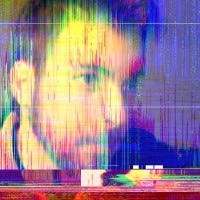
Featured Blog | This community-written post highlights the best of what the game industry has to offer. Read more like it on the Game Developer Blogs.
Resurrecting and delivering our indie game after 5 years - Part III: A visual journey
It is time for us to check out the visual development of Qasir al-Wasat, how the visuals came to be and which references and principles guided the art direction.

It is time for us to check out the visual development of Qasir al-Wasat, how the visuals came to be and which references and principles guided the art direction. Today we will present a broad view of the sources and processes used during development, used in the character designs, props, background and typography. So, if this is your cup of tea, head over to the official tumblr for some crisp in-depth posts.
A question of setting
As mentioned before, Qasir’s development follows directly the pre-production of another game we were working in 2009, the Tsar Project. And since Qasir is a prequel to that story it seemed logical at the time to carry along Tsar's art direction to the new project. But when released Qasir’s first teaser it received so much positive feedback for its Arabian setting and use of folklore, that we decided to, quite literally, go back to the drawing board.

We've kept though Tsar's main visual guideline: that the more Subtle empathizes with something, the more realistically we should represent such thing. You can see this above, with concept art for the Tsar Project showing a progressive stylizations from left to right, with the Goetians at one end and the matryoshka-inspired Russian countryfolk in the other.
Graphics for an Arabian tale
Changing the setting from Moscow to the Syrian Desert we had to find another reference style to apply in the more stylised elements of the game. Now, there was a strong visual tradition in the Middle-East during pre-Islamic times, and in some places, not only did illustration survive, but it flourished under Islam. And around the 12th century this was especially true with the Persian Miniatures:

But why have a Persian style if the story takes place in the Levant? In fact, one could say that what you see in the game is not the action as it happened in Syria, but the story someone in Alamut or Shiraz put down in an illustrated book, years later. That's why rooms have decorative borders with golden foiled margins, characters are so contrastingly flat and architecture bends itself in unrealistic geometry.


Keeping it authentic
Having the art direction rooted in traditional style, it was not enough to just have characters and objects painted based on history – their very clothes and decorations should fit the setting properly. That's why the bulk of our palace was inspired by two real Syrian Palaces: Qasr al-Hayr al-Sharqi and Qasr al-Hayr al-Gharbi. Clothing and customs were (even if briefly) discussed and verified with historians. Each individual jar, plate, box and statue in the game was carefully hand painted, inspired by examples displayed in museums around the world [1, 2, 3]. Everything should resemble objects that could be dug off the ruins of an ancient red brick palace, if archeologists were ever to find a palace at the bottom of a dam near Palmyra.


Keeping it painterly
Hand painting props and backgrounds guaranteed a realistic and crafty look we were going for, but also brought some challenges to the game design. Tiling painted images can be much more complicated than pixel art, for instance, and this is why we've built Qasir's level design with soft edged pieces. There are over 60 individual wall pieces, more than 20 floor tiles and a plethora of set pieces scattered through the palace to break patterns and make rooms unique.


Even some of the animations in the game were hand painted, frame by frame. This was achieved with bitmap-based software, and most of the time in the least automated way, so that the final result felt organic and kept that slight unevenness of handcraft.


Character personality
Characters, on the other hand, should feel more constrained, stylised and abstracted than backgrounds. With a volume of characters enough to overburden a single animator we decided to go with skeletal animation. After having the ones animated frame by frame, this technique allowed us to swap textures and have many different characters animated at once. The separate textures for each character were done in vector art, resulting in the flat and crisp look that allowed for many variations of details and palette.


Lastly, Qasir is a text-heavy game, presenting two great opportunities. The first one was to bring onboard two talented calligraphers, Marcelo Perin and Marcel Bruschi, that created the scribblings you'll find in the many letters and notes around the palace. They worked from Arabic, Paleo Hebrew and a peculiar medieval script sources to create unintelligible yet visually fitting texts. The second opportunity was to use a variety of typefaces, giving each character’s group a different voice. We were fortunate enough to find some great open-license fonts, and will make a Tumblr post dedicated to them very shortly.

More to come!
There's so much more we could go in depth with the visual development! Check regularly for more updates in this and other topics at our Tumblr. As for these letters, expect the next one shortly after the game release, with a look at Qasir's game design and mechanics!
Until then we'll be around at the usual Twitter, Facebook and Tumblr!
About the Author(s)
You May Also Like













